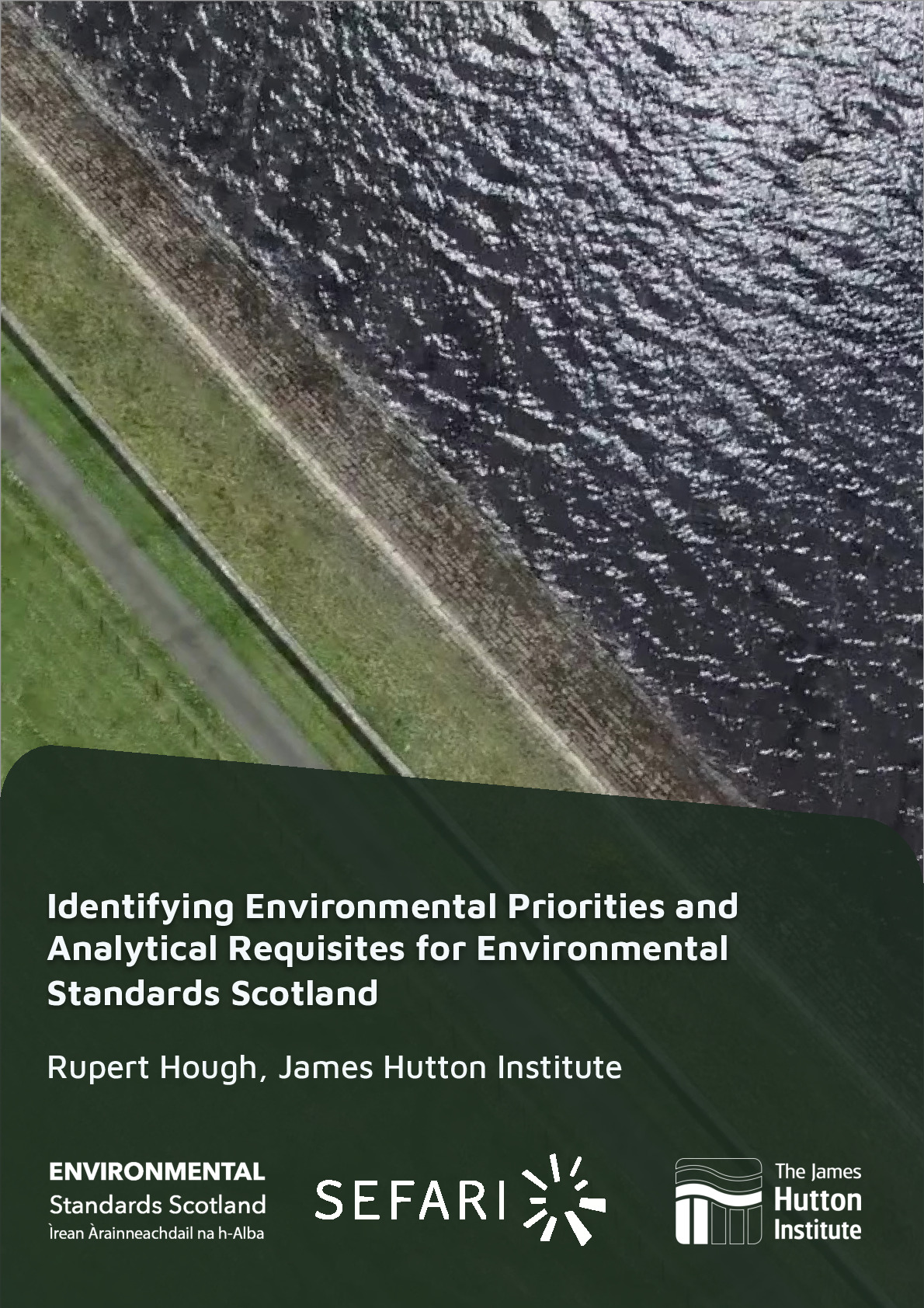Download
Description
Environmental Standards Scotland (ESS) is being established as a new non-ministerial office to monitor Scottish public authorities’ compliance with, and the effectiveness of, environmental law following the UK’s departure from the EU. It will be independent of the Scottish Government and will be responsible for ensuring that public authorities in Scotland comply with environmental law.
The environment is a system where changes in one part have knock-on impacts on other areas. Environmental legislation, and the duty-holders who are held accountable to the legislation, are however sectoral. This presents specific challenges for compliance assurance where systems understanding is required to ensure holistic success, but where analyses and support need to be sector specific and focussed.
Existing environmental governance is divided into several sectors (soils, waters, biodiversity, climate, etc.). Given logistical, operational, and financial constraints, it is important to understand the level and types of support required to achieve compliance with environmental legislation within each sector. Similarly, it is important to prioritise where initial efforts should be focussed, and the skill sets needed to support compliance assurance.
Part 1 (Environmental Priorities – An Initial Exploration) presents an in-depth analysis of how environmental priorities could be set. It reviews recent published approaches to establishing priorities, and maps published priority lists onto current Scottish environmental strategy, identifying commonalities and gaps. Environmental prioritisation is a multifactorial exercise, and it’s important to recognise that the biggest problems might not be the first priorities depending on how intractable those problems might be. The indicators used to evaluate these priorities are reviewed, the levels of compliance against legislature, as well as the maturity of the policies that support these evaluations. The final prioritisation is presented both by overall rank (Figure 2.16) and by the sorts of activities that ESS will need to perform to support compliance, the ‘compliance pipeline’ (Figure 2.17).
The analysis presented places greater weighting on environmental priorities that have less-developed monitoring/evaluation processes, less-developed supporting policy, and where compliance is less consistent. On this basis, higher prioritisation was given to soils, biodiversity, and greenhouse gases/carbon. Looking at the same environmental priorities through the lens of compliance assurance indicates which stage in the compliance pipeline the different environmental priorities are currently at. On this basis, priorities such as soils and biodiversity were primarily at the compliance promotion stage, while others such as air pollution and marine quality were primarily at the follow up and enforcement stage.
Part 2 (Analytical Requisites) details the skills, roles and governance required to implement the analytical functions of ESS. Specifically, these were developed given the requirement of ESS to embed specific sectoral analyses/advice within a wider systems approach. Thus, the proposed structure combined two main complementary teams. Firstly, a team of domain specialists who bring the systems and research knowledge and can interpret/contextualise results of more specific analyses. This team can evolve with changing priorities. Secondly, a more permanent team of domain-agnostic analysts whose role it is to undertake sector-specific data assurance and analyses. It is also recommended that the technical support side, in terms of infrastructure, data management, and software engineering are well catered for to minimise risks associated with errors, data breaches, inconsistent advice, poor compliance with information governance legislation, etc. that would undermine ESS’ authority.
